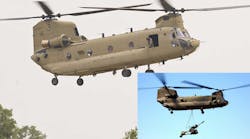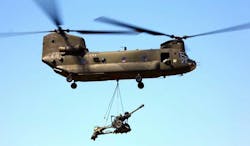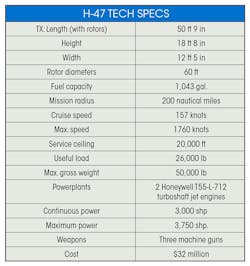A little over 60 years ago, the YCH-1B, the prototype for the H-47 Chinook tandem-rotor heavy-lift helicopter, first took flight. It was developed and designed at Vertol, but by the time the prototype took off in Philadelphia in 1961, that company had been purchased by Boeing, which continues to build H-47s. In fact, the Chinook is Boeing’s longest running production program and one of the longest running aircraft programs in aviation history.
The U.S. Army took delivery of its first Chinook the next year, 1962, and within three years Chinooks were flying combat missions in Vietnam. Over the years Boeing has introduced new variants and technical upgrades. The CH-47F, for example, can carry twice the load of previous versions. There are also MH-47s, modified Chinooks for use by U.S. Army Special Operations Forces. Commercial operators also use CH-47s for aerial firefighting; transporting materials for construction projects and disaster relief efforts; and supporting electrical, gas and oil utilities in remote locations.
In 2017, Boeing received a contract to develop the next generation of Chinooks for the U.S. Army and Special Operations Forces. And the Block II helicopters currently in engineering, manufacturing and development will have improved lift capabilities, lower maintenance costs, and have more in common with U.S. Army and allied fleets. It is also building 15 MH-47G versions for the Army’s Special Forces.
“The mighty Chinook continues to be the most advanced, affordable, and battle-tested heavy-lift helicopter in the world, “says Andy Builta, Boeing vice president and H-47 program manager. “This aircraft is positioned to fly for at least 100 years, and that’s a testament to the enduring partnership of Boeing, its industry partners, and Chinook users across the globe.”
To see the H-47 in action, check out this video:


